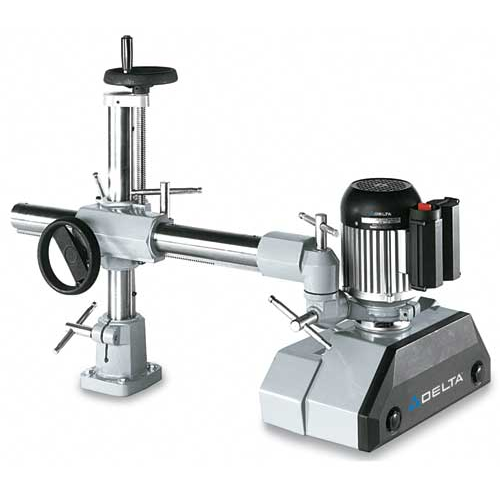
I do runs of molding in the 1,000-3,000 foot range on a Delta RT 40. I’m thinking of mounting a power feeder onto the saw, but I’d like to hear the pros and cons before I do.
Ellis Walentine: On the plus side, power feeders keep the wood in constant contact with the fence and table, they produce a uniform width and edge quality, they greatly speed the process, and they keep your fingers away from the blade. I can’t think of any cons unless you have to mount and unmount the feeder every time you use the saw.
Rick White: My first response is: what took you so long? I love my power feeder and have been using it for years. I highly recommend power feeders and can’t think of any reason not to get one. They give you much more control over your materials and you get better results with increased safety. Those are three powerful reasons to go out and get one.
And they are getting better all the time. The older ones were very heavy and it usually took two people to set it up. Now Delta and others are buidling smaller power feeders for the hobbyist market that are light, easy to set up and much more affordable. This is a great time to be in the market for a feeder.
Ian Kirby: The advantages of power feeders are:
– a hold down in front and in back of the cut
– the work held tight to the bed of the machine and tight to the fence
– the work propelled pas the blade at a constant pressure and at a constant speed
The outcome is the most accurate dimension cut you can get and the smoothest cut face you can get. The feed rate is in excess of what can be achieved by manually pushing the work through. Buy a good one. My preference would be Holz-Her based in Charlotte, NC. I’m hard pressed to give you a disadvantage a con to go with the pro.







